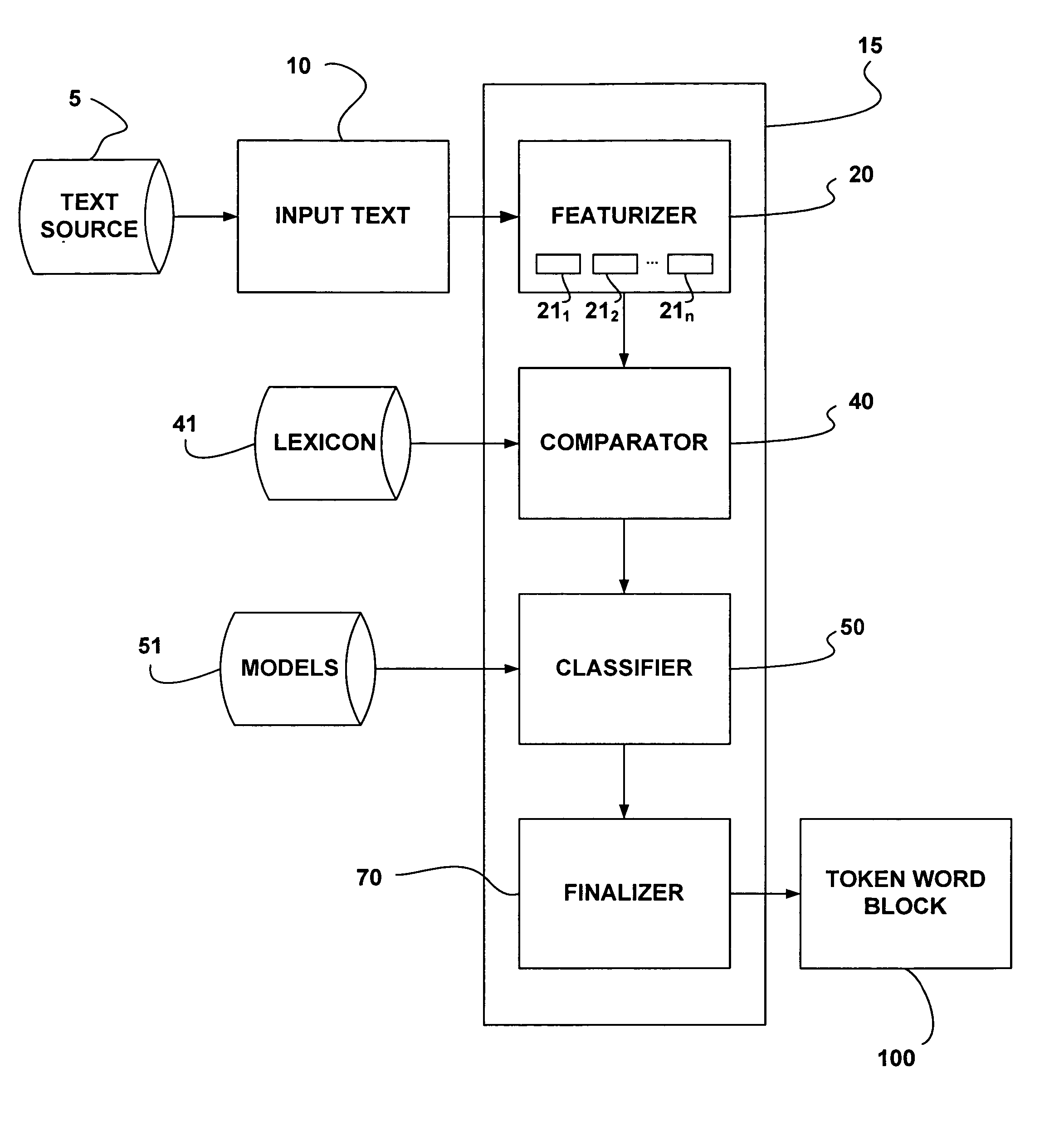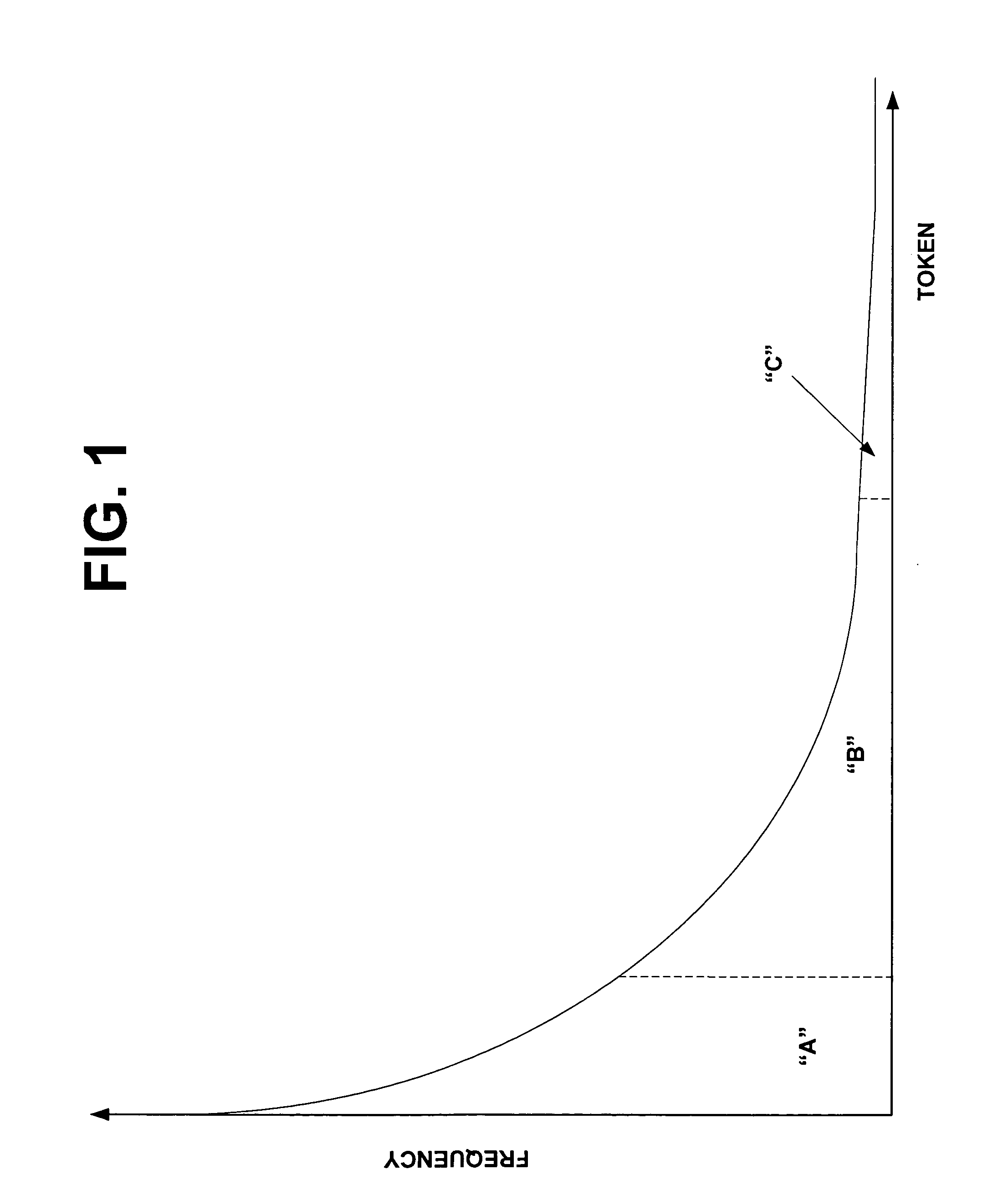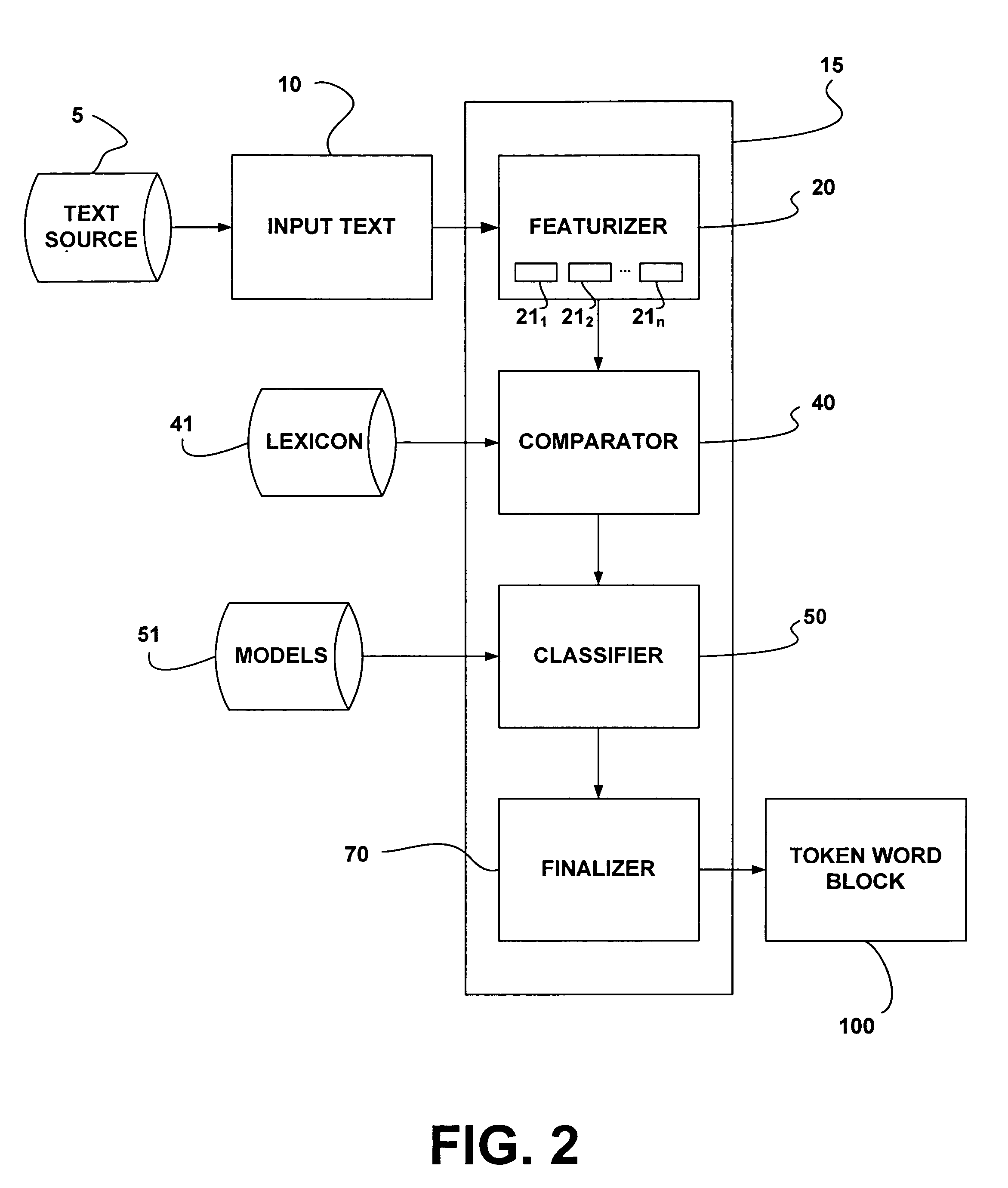System and method for tokenization of text
a tokenization system and tokenization technology, applied in the field of system and method for tokenization of text, system and method for tokenization of input text, can solve the problems of poor “translation” of text, development of tokenizer, difficult to achieve, etc., and achieve the effect of easy apparent complexity of rule-based system and complex system
- Summary
- Abstract
- Description
- Claims
- Application Information
AI Technical Summary
Problems solved by technology
Method used
Image
Examples
Embodiment Construction
[0026] The present disclosure will now be described more fully with reference to the Figures in which various embodiments of the present invention are shown. The subject matter of this disclosure may, however, be embodied in many different forms and should not be construed as being limited to the embodiments set forth herein.
[0027]FIG. 1 is a graphical representation of the Hapax Legomenon principle. Specifically, this graph illustrates the problem that programmers face when developing speech recognition programs and more specifically tokenizers. As illustrated in FIG. 1, the x-axis on the graph represents all of the possible tokens and representations that may appear in text. This list is virtually infinite. The y-axis on the graph indicates the frequency with which a given token is found in usage. For example, tokens such as “a”, “an”, and “the” would occur very often in usage and therefore, these would appear in zone “A” illustrated in FIG. 1. Other words such as days of the wee...
PUM
 Login to View More
Login to View More Abstract
Description
Claims
Application Information
 Login to View More
Login to View More - R&D
- Intellectual Property
- Life Sciences
- Materials
- Tech Scout
- Unparalleled Data Quality
- Higher Quality Content
- 60% Fewer Hallucinations
Browse by: Latest US Patents, China's latest patents, Technical Efficacy Thesaurus, Application Domain, Technology Topic, Popular Technical Reports.
© 2025 PatSnap. All rights reserved.Legal|Privacy policy|Modern Slavery Act Transparency Statement|Sitemap|About US| Contact US: help@patsnap.com



